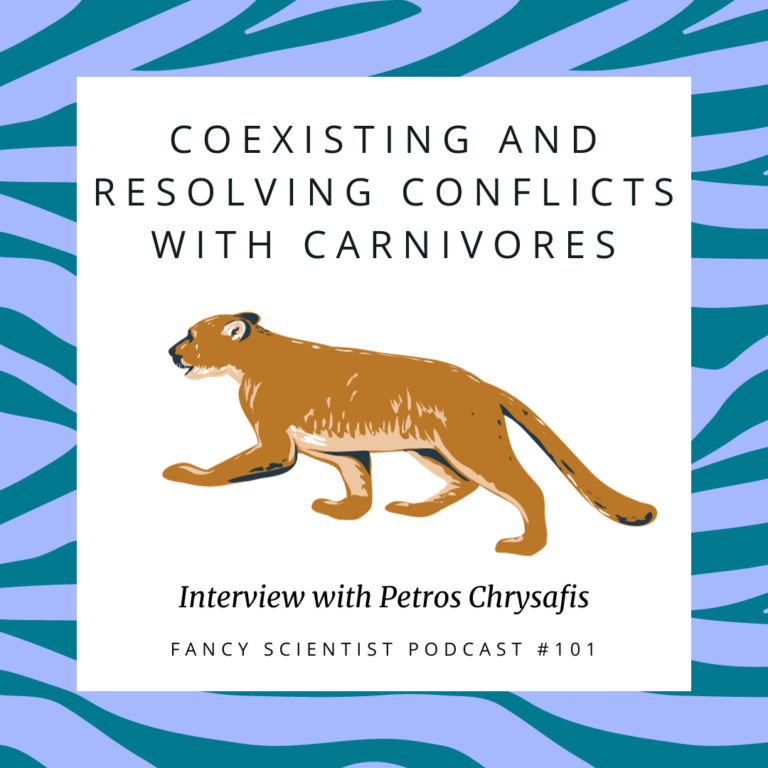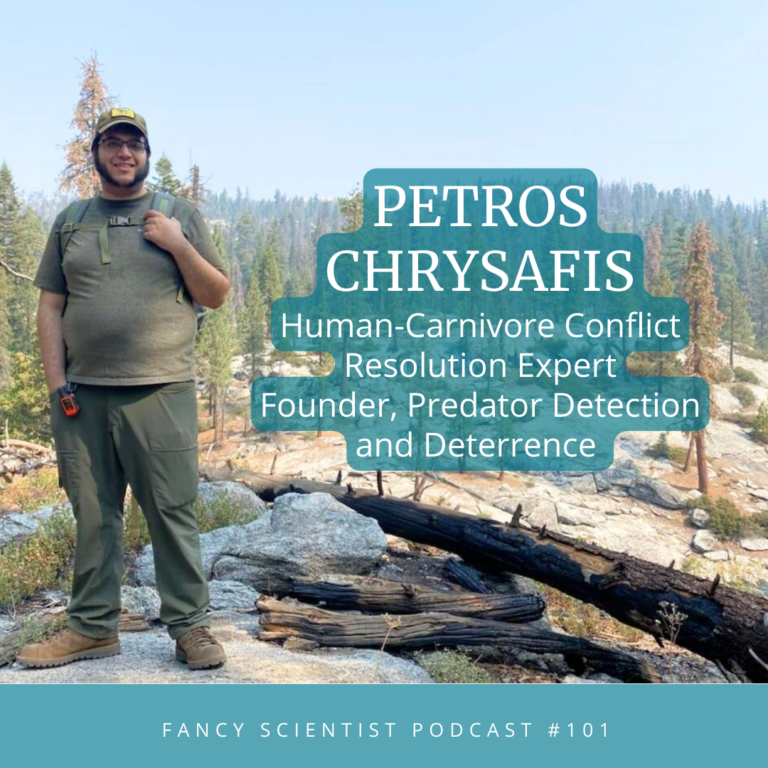Around the world, carnivores have been and still are heavily persecuted. Although the percentages are low, they do kill livestock, pets, and even people. The most common knee-jerk reaction for people is to do something about it, which almost always means killing the animal. For conservationists and wildlife lovers, this is a tough pill to swallow; it seems unfair to punish an animal for doing what it does and predators play important roles in the ecosystem. But even more fundamental than that – killing them doesn’t work and chances are, there will be another one back to do it again.
Powered by RedCircle
So what can one do to protect themselves, their pets, and the domestic livestock that they own? In this episode of the Fancy Scientist podcast, I chatted with Petros Chrysafis, an expert in human-carnivore conflict resolution and founder of Predator Detection and Deterrence, an organization dedicated to helping people address carnivore-related issues using non-lethal methods about using science, research, technology, and even some simple interventions to prevent carnivores from taking the occasional chicken, sheep, or goat.
The inspiration for this episode came from a couple of recent events that reignited my interest in solving the problems between humans and carnivores living together in the landscape. In a recent episode of “The Proof is Out There” on the History Channel, we explored animal attacks, and I discussed what happened when Utah runner and hiker Kyle Burgess was charged for several minutes by an angry female mountain lion. I interviewed Kyle in a previous podcast, and revisiting his experience led me to a fascinating podcast interview featuring Petros, where his insights and approaches to mitigating mountain lion and other carnivores conflicts captured my attention.
Additionally, a seemingly unrelated Instagram post about a dead red fox caught my eye in the worst way. The caption talked about how this was a wonderful lesson for children on being connected to the land and the close association they can have with life and death. At first glance, I agreed, but then I looked at the fox, who appeared to be robust and not looking like it was on its deathbed, and realized it was probably shot. It was, simply because it did something foxes do – predate on other animals. It ate their chickens. I commented about how the death was unnecessary and that in the end, it wouldn’t work as a means to protect chickens, but my comment advocating for non-lethal solutions was met with a block, prompting me even more to reach out to Petros.

Our conversation today is both eye-opening and wide-ranging, touching on various aspects of human-carnivore conflict, but especially focusing on mountain lions and coyotes out west. I’m confident you’ll gain valuable insights and perspectives from Petros whether you’re interested in wildlife conservation, coexistence strategies, or simply curious about the intricate dynamics between humans and carnivores, this episode has something for everyone!
Finally, you’ll learn about how Petros decided to take a unique path amongst wildlife professionals – starting his own business – and how he uses it to truly make a difference in the lives of carnivores.

Specifically, we discussed:
- How scientists study carnivores in relation to human-wildlife conflict
- How to use camera traps to identify carnivores and assess the situation
- Developing short and long-term sustainable deterrence plans for landowners
- How letting resident carnivores be can protect your land from unknown newcomers
- How understanding carnivore behavior can lead to non-lethal, humane solutions
- How Petros went from wanting to be a marine biologist to studying carnivores out west
- How Petros started his own business in human-wildlife conflict solutions
- And MORE!!
Resources and Sources in Coexisting and Resolving Conflicts with Carnivores
Love this post? Share it with friends!




